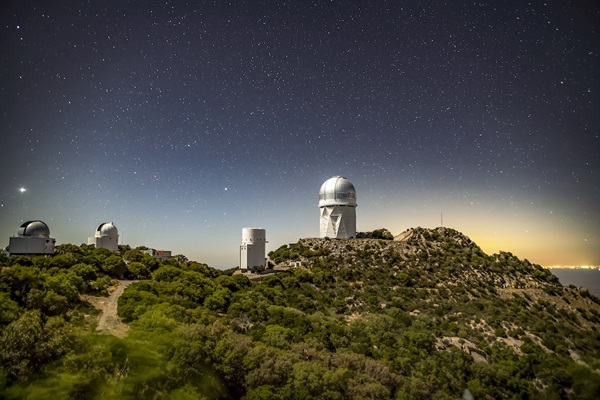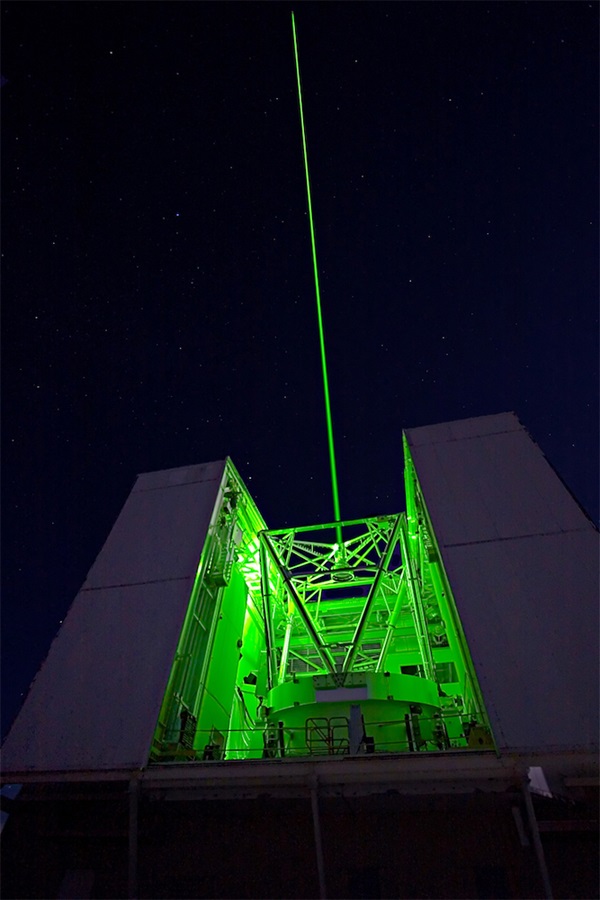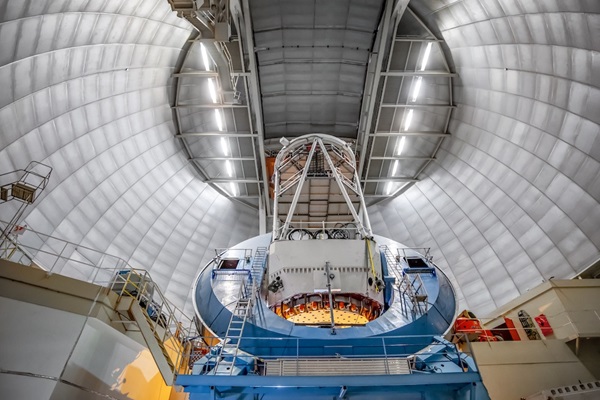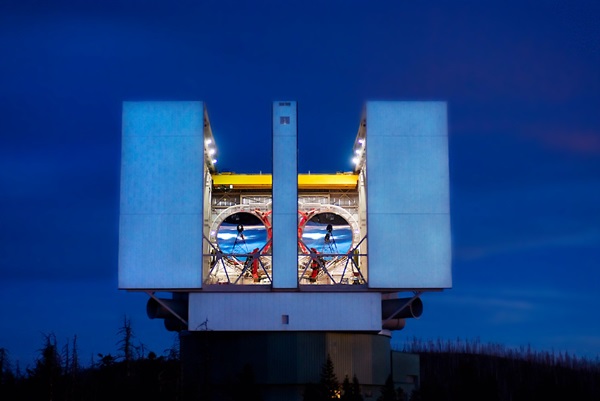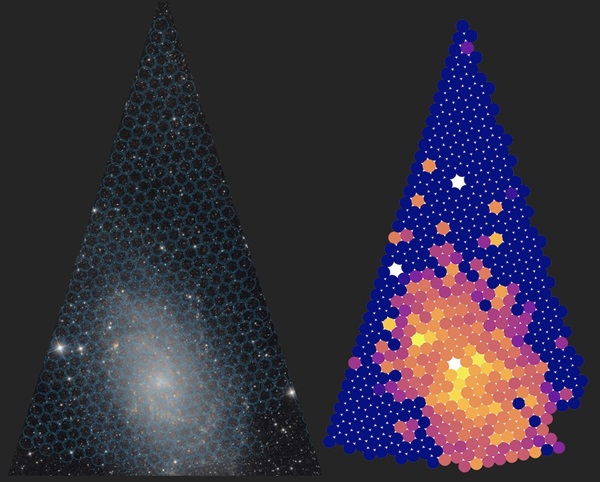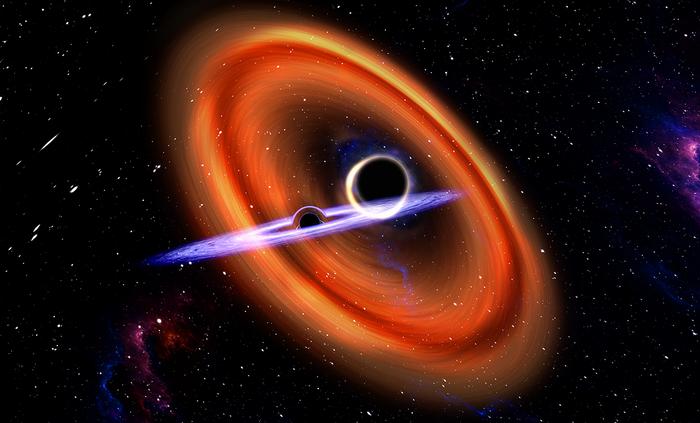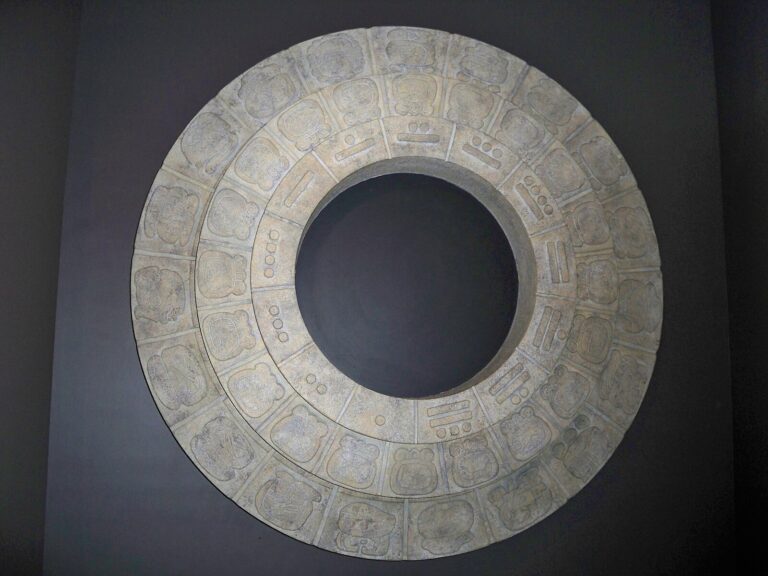Key Takeaways:
Amid the burning Arizona sands, three peaks form a triangle of superlatives surrounding Tucson. Atop Mount Graham sits the world’s largest optical telescope. Mount Hopkins is home to North America’s second-largest single-mirror telescope. And Kitt Peak contains the continent’s largest single collection of mountaintop astronomical instruments.
The dry air and mountainous terrain around Tucson make this power trio the core of optical astronomy in the continental U.S. The observatories are historic — the oldest, Kitt Peak National Observatory (KPNO), was founded in 1958 and its flagship Mayall telescope turns 50 this year. Yet their constant innovations have made them magnets for astronomers worldwide. Facilities on all three mountaintops are doing cutting-edge research on some of astronomy’s hottest topics, from dark energy to exoplanets, with inventive instrumentation.
Telescopes reborn
Last summer, I set out to explore the Triangle, determined to find out how these observatories were adapting to today’s challenges, including weathering the COVID-19 pandemic and the increasing threat of devastating forest fires.
In June, the entire KPNO complex narrowly escaped annihilation in the nearly 29,500-acre Contreras Fire. But when the smoke cleared, KPNO’s 18-story Mayall telescope dome was still standing, visible from Tucson 40 miles (64 kilometers) to the northeast and towering above almost two dozen smaller domes.
The Mayall and the 18-story-tall building that houses it date from a time when tall domes were considered crucial for still air and optimal observing. That concept was eventually abandoned for simpler, more compact designs, but the long elevator ride to the top-floor control room still inspires visions of astronomers peering skyward from precarious ladders.
The telescope has retained its original 15-ton, 4-meter solid glass primary mirror and equatorial mount. “It’s a behemoth,” says Kitt Peak’s associate director, Michelle Edwards, and, in some ways, a relic. “But the bang for the buck comes with the instrumentation that you put on a telescope. You can take a telescope that is 40 years old and put in leading-edge instrumentation, and you basically are at the forefront of science.”
That’s what KPNO and its owner, the National Science Foundation (NSF), did to the Mayall in 2018, when engineers replaced its secondary mirror with a state-of-the-art spectrograph called the Dark Energy Spectroscopic Instrument (DESI). The instrument was built with funding from the Department of Energy for a singular, five-year mission: to determine the role of dark energy in the universe’s ongoing expansion. Since 2021, DESI has been collecting data from over 30 million distant galaxies to create a three-dimensional map of the universe, reconstructing how it has evolved since the Big Bang.
DESI is one of the most powerful instruments of its kind in the world. With a field of view 38 times larger than the Full Moon, it can obtain spectra of extremely faint galaxies up to 12 billion years old using 5,000 robotically positioned optical fibers. Inside DESI, six lenses focus light from the Mayall’s primary mirror onto optical fibers split into 10 bundles of 500 strands each, which lead to a sealed room one floor below. The fibers produce spectra of thousands of galaxies with each exposure, divided into red, blue, and near-infrared wavelengths.
The spectra reveal vital details about each galaxy: age, distance, and velocity. All of these measurements are based on cosmological redshift, the stretching of light toward longer (redder) wavelengths as the universe expands. The faster the universe is expanding and the farther an object’s distance, the redder it appears.
Seeing the unseeable
While DESI measures cosmological redshift, Kitt Peak’s other new instrument, attached to the 3.5-meter WIYN telescope and called NEID (pronounced noo-id), measures the more familiar Doppler shift: the way wavelengths are stretched or compressed by the motion of an object moving away or toward us, like the sound waves of an ambulance siren. Astronomers can then use the information to determine the radial velocity, or “wobble,” of a star, indicating the possible presence of an unseen exoplanet.
NEID is named after the word “to see” in the language of the Tohono O’odham, the Native American people on whose land Kitt Peak lies. (It also stands for NN-EXPLORE Exoplanet Investigation with Doppler Spectroscopy.) NEID is a much smaller spectroscope than DESI, with a single optical fiber that detects how much a star appears to wobble back and forth on the sky due to the gravitational tug of its exoplanets.
All of NEID’s key hardware is isolated inside a vacuum-sealed room. This helps make NEID three times more sensitive than the previous generation of radial velocity detectors. Despite the enormous distances of the stars it measures, NEID can detect a star wobbling as slowly as a baby crawls, about a foot (30 centimeters) per second. The wobble’s speed gives astronomers a precise read on the masses of exoplanets in the system, down to planets nearly as small as Earth.
Although WIYN’s alt-azimuth mount makes it more compact than the Mayall, its key innovation was its lightweight primary mirror: WIYN was one of the first telescopes of its size to experiment with honeycombed, spun-glass mirrors pioneered by the University of Arizona’s Richard F. Caris Mirror Lab in Tucson. “The telescope here was built as a testbed for, ‘How do we eventually build bigger telescopes?’ ” says Emily Hunting, WIYN’s optical engineer. Though only about 23 percent smaller than the Mayall’s primary mirror in area, WIYN’s mirror is nearly seven times lighter.
WIYN saw first light in 1994, and Caris mirrors are now the gold standard for top-tier optical telescopes worldwide. Caris also makes the largest mirrors in the world at 8.4 meters wide. Seven of these are being installed at the Giant Magellan Telescope in Chile — and two already power the Large Binocular Telescope (LBT) on Mount Graham.
Sky island aflame
Kitt Peak, Mount Graham, and Mount Hopkins are examples of what ecologists call “sky islands,” renowned for their verdant alpine ecosystems. They are also increasingly prone to devastating fires amid a prolonged, historic drought linked to climate change.
Mount Graham has survived three blazes since 1996, and in May 2022, Mount Hopkins escaped a smaller fire that was quickly doused.
Most recently, on June 11, 2022, lightning struck a remote ridge near Kitt Peak National Observatory (KPNO), igniting the Contreras Fire. As a wall of flames marched inexorably toward the observatory, firefighting crews fought from land and sky across the rugged terrain. By June 17, fires had obscured two radio telescopes and incinerated several dorms and outbuildings. When the smoke cleared on June 19, KPNO officials, fearing the worst, were allowed access — and discovered that all science equipment had miraculously survived the inferno.
Inside a colossus
The LBT is the second corner of the Tucson Triangle, some 100 miles (160 km) northeast of Kitt Peak and 70 miles (113 km) northeast of Tucson.
If the Mayall is a behemoth, as Edwards calls it, LBT is a colossus. “It’s about as tall as the Arc de Triomphe,” says former LBT director Christian Veillet, who relinquished the post last year after 10 years managing LBT, but remains on staff.
The lowest three stories of the building are painted green and support a hulking white edifice several times as high that rotates each night to track stars. Inside the cavernous telescope dome, a pair of massive, multistory steel gears ride on a thin layer of oil, tilting the twin mirrors skyward with silent majesty as giant doors gradually pull open to reveal a bejeweled black sky.
All aspects of the LBT are staggering in size and scope. Although the ingenious design is efficient in driving twin mirrors on a single mount, having two primaries means that there are two of almost everything else, from enormous science instruments — some larger than SUVs — to the complicated mechanisms that switch between them.
In the middle of the night, the fourth-floor corridor becomes a carnival funhouse where everything changes position. It’s the transition floor between the observatory’s base and the rotating dome, so anyone going up or down has to transfer between elevators — and the two shafts change their positions whenever the dome rotates. Astronomers rely on colored lines painted along the dimly lit circular hallway to navigate to the correct elevator.
“Blue leads up to heaven, red takes you down to, well, the control room,” says Veillet with a wry smile.
Twins’ reunion
In May 2022, the key instrument linking the LBT’s two mirrors was pressed back into service after a long, COVID-imposed respite. It is called LBTI, with I signifying interferometer, an instrument that melds the light from the two mirrors into one.
For the previous two years, the LBT’s mirrors were used individually for separate missions, but their combined power is the telescope’s raison d’être — it’s the largest single-mount binocular telescope in the world. When working together in phase, the signals from each mirror produce an interference pattern of fringes. By analyzing these fringes, scientists can construct a higher-resolution virtual signal. The result is an image as sharp as if the instrument had a single mirror the size of both mirrors combined, effectively 23 meters in diameter, and with a field of view 10 times wider than that of the Hubble Space Telescope.
But on the night that I visited, they weren’t quite there yet. Operating the pair in tandem is “super exciting and also super challenging,” says Steve Ertel, lead scientist for LBTI. “We’ve seen some fringes … but we’ve not yet been successful locking the interferometry phase between the two sides to get back to what we need for science.”
When not flexing its interferometry abilities, LBT serves as a simple infrared imager using a single mirror. “The project we’re doing right now is also exciting,” says Ertel, “looking for giant planets in the habitable zone around very nearby stars. We will be able to go down to super-Earth-mass planets when LBTI’s back, but I find giant planets more exciting. If you find a giant planet in the habitable zone, you have a good chance of rocky moons, so the probability of life there is a lot higher.”
Realm of the mountain king
From afar, the dome of the MMT Observatory atop Mount Hopkins strikes a regal profile. It lies 90 miles (145 km) southwest of Mount Graham and 45 miles (75 km) southeast of Kitt Peak, sitting alone on the peak like a mountain king on a craggy throne.
The exposed position has a benefit, explains Grant Williams, the director of the MMT, which is part of the Fred L. Whipple Observatory on Mount Hopkins. “When there are prevailing winds, it’s a laminar [smooth] flow over the telescope rather than being turbulent,” he says — which means better seeing and image clarity.
When the MMT saw first light in 1979, it was the third-largest optical telescope in the world. Then, the telescope comprised six separate mirrors left over from a canceled military project; its acronym stood for Multiple Mirror Telescope. However, in 2000, the MMT was converted to a single mirror. And in 2002, it was enhanced with the world’s first adaptive optics system to use a deformable secondary mirror for correcting atmospheric turbulence. Previous systems made corrections further down the line in the optical train, but deforming the secondary mirror itself sends sharp images directly to science instruments.
On the night I visited, prevailing southwesterlies topped 35 mph (56 km/h). These gusts weren’t a problem, but computer gremlins were a showstopper. An instrument switchover earlier in the day from an infrared imager to a spectroscope was creating software issues that ultimately scrubbed operations for the night.
On a ridge 1,000 feet (300 m) below, though, three smaller domes housing 1.2-, 1.3-, and 1.5-meter telescopes were in business, searching for exoplanets. Several smaller scopes operating from a low hut and a nearby array of individually housed commercial scopes also took part in the hunt.
“The Ridge is almost all exoplanets,” says Pascal Fortin, director of Whipple Observatory. The 1.2-meter telescope performed the initial sky survey for Kepler, NASA’s wildly successful planet-hunting mission. “We found the best places for Kepler to look, and it discovered over 3,000 in that small field,” he says.
Breaking light’s speed limit
The Ridge was also the site for Whipple’s very first astronomical instrument, a 10-meter gamma-ray detector installed in 1968. In 2007, its successor was put in. The Very Energetic Radiation Imaging Telescope Array System (VERITAS) is located at the base of Mount Hopkins and consists of four detectors. Each features a segmented 12-meter mirror with a longer focal length and less optical aberration.
Gamma rays are the most energetic form of radiation on the electromagnetic spectrum. VERITAS focuses on the most extreme gamma rays of all, so powerful they can’t be reproduced in a lab. When these rays hit our atmosphere, they create thousands of electrons and positrons that exceed the speed of light in air. (The speed of light when unimpeded in a vacuum is still the ultimate speed limit of the universe.)
Similar to a sonic boom, breaking the local light-speed limit generates a brief burst of blue light called Cherenkov radiation. A cascading chain of electron-positron pairs collides with more air molecules, producing a glowing shower the size of two football fields, some 6 miles (10 km) above the ground. It lasts only nanoseconds, but VERITAS reacts just as quickly, capturing data about the extreme environments where such gamma rays are born: supernovae, neutron stars, and black holes.
By placing the four VERITAS telescopes some 300 feet (90 m) apart, scientists can pinpoint where the gamma rays originated as well as minimize superfluous noise from other particles. Each VERITAS telescope uses 350 mirrors to focus light on a single camera containing a dazzling array of 499 photomultiplier tubes, one per pixel.
VERITAS is at the base of the mountain because “there is a sweet spot of how far away you want to be from those showers,” Qi Feng, an astrophysicist and postdoc working at Whipple, explains. “If we are at 4 kilometers [2.5 miles] on the mountain, the showers will be right above us. That’s going to be huge, and it’s going to be very hard to design the optics to catch those. So, we can’t be too high.”
Lure of the triangle
This year, all three observatories are celebrating milestone anniversaries and the restart of public programs after a three-year respite during the pandemic. (Check each observatory’s web site for the latest information on when they will reopen.)
Mount Graham is marking its 30th anniversary as an international observatory, while LBT celebrates its 15th since first light. Whipple turns 55, and KPNO will be celebrating its 65th birthday as America’s first national observatory. NSF has also begun converting Kitt Peak’s retired solar observatory into a $4 million interactive science museum, scheduled to open this year.
It is an auspicious time for the trio as the public is welcomed back and renovations continue. From dark energy to black holes to the search for life in habitable exoplanet zones, the Tucson Triangle beckons.
Sacred peaks
All three peaks of the Tucson Triangle — Kitt Peak, Mount Graham, and Mount Hopkins — are sacred to the Native American tribes that call the respective regions home. Kitt Peak sits within the Tohono O’odham Nation Reservation; the Tohono O’odham Nation agreed to lease the site to the observatory in 1958, though not without trepidation. In the early 1980s, the construction of Mount Graham International Observatory faced opposition from Apaches — amplified by the Large Binocular Telescope’s original name, the Columbus Telescope. And in 2000, plans for the proposed site of VERITAS on Mount Hopkins were blocked by the U.S. Forest Service due to the proximity of a Native American sweat lodge where sacred rituals were performed. Astronomers then planned to mount VERITAS at Kitt Peak; this was opposed by the Tohono O’odham Nation and eventually abandoned. In 2007, VERITAS was installed at its present site at Mount Hopkins near the Whipple Observatory visitor center. – Mark Zastrow

